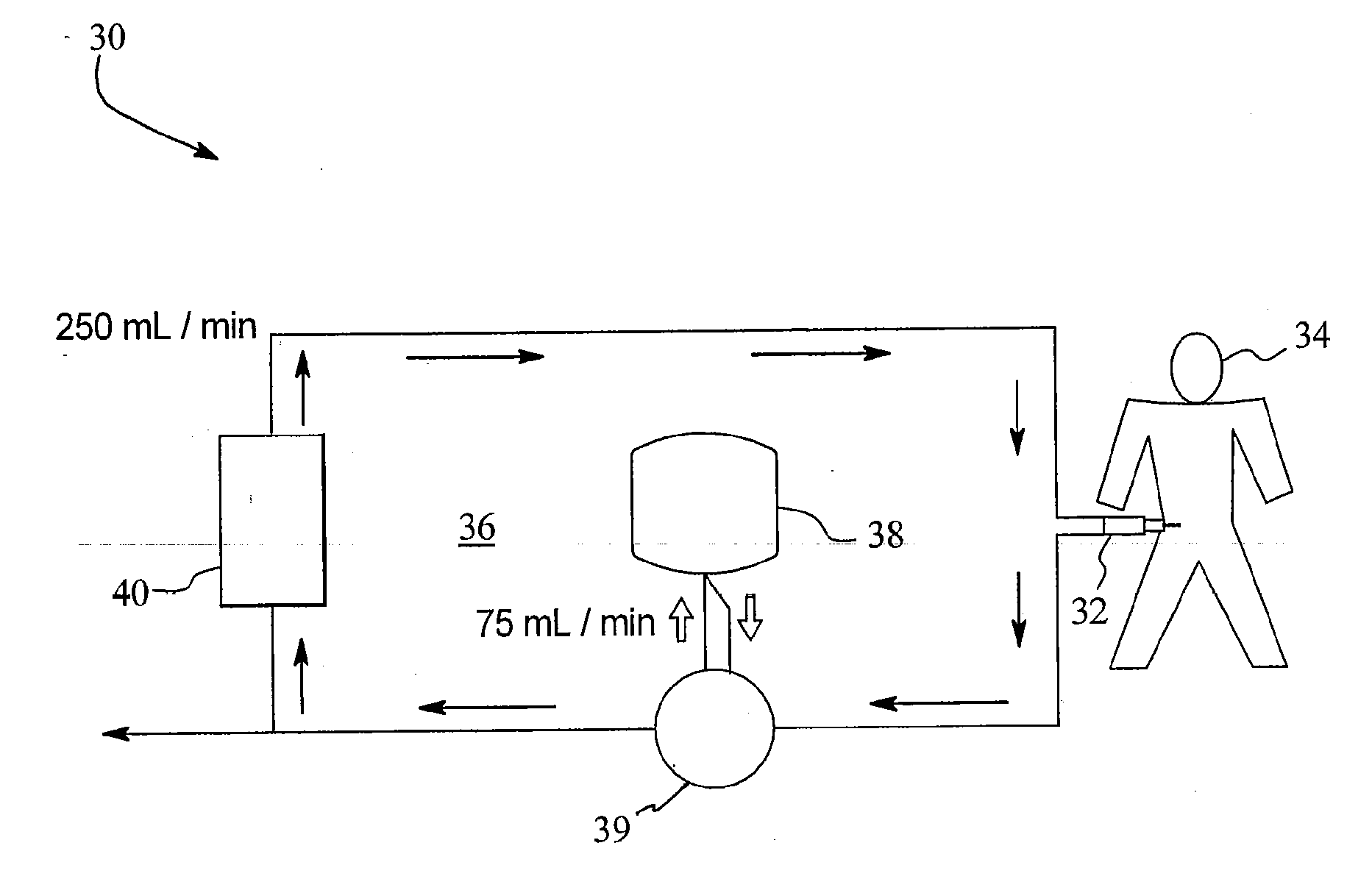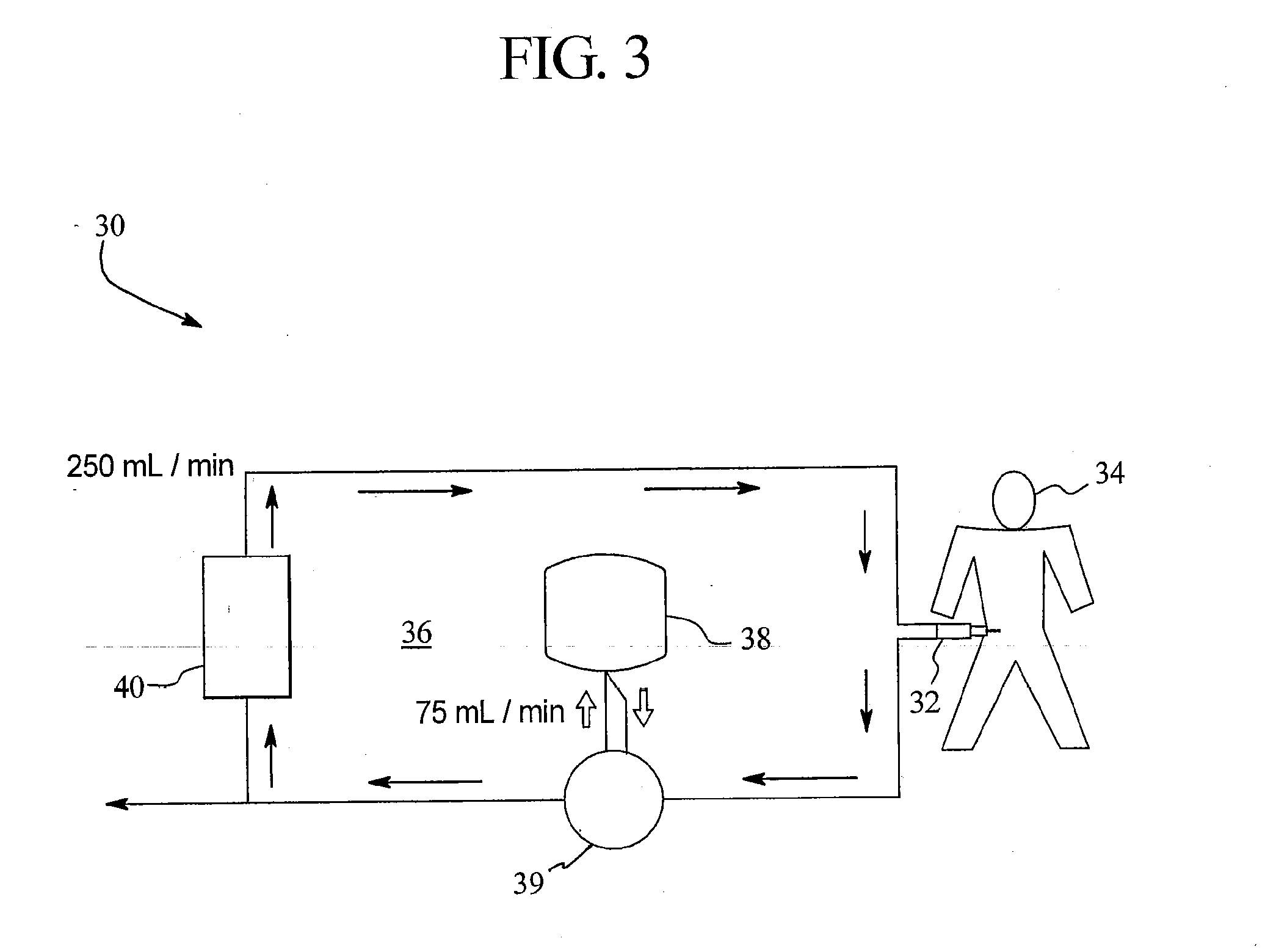Systems and methods for peritoneal dialysis
a technology of peritoneal dialysis and system, applied in the field of systems, can solve the problems of inability to balance water, minerals and excretion of daily metabolic load, inability to eliminate toxic end products of nitrogen metabolism (e.g., urea, creatinine, uric acid, etc.) and achieve the effect of optimizing the use of dialysate, improving system and method, and minimizing treatment tim
- Summary
- Abstract
- Description
- Claims
- Application Information
AI Technical Summary
Benefits of technology
Problems solved by technology
Method used
Image
Examples
Embodiment Construction
[0035] In general, the present invention employs a single closed fluid path along which a minimal volume of therapy fluid can be circulated such that the therapy fluid can pass into, through and out of a peritoneal cavity of a patient connected to the closed fluid path to effectively remove solutes, excess water and the like from the patient during treatment. In an embodiment, the available volume of therapy fluid can include about 6 liters or less of an initial source of dialysate. It is believed that the available volume of therapy fluid can be circulated along the closed fluid path to remove solutes from the patient at or exceeding clinically acceptable solute removal standards, such as the National Kidney Foundation's DOQI levels. In an embodiment, acceptable solute removal or clearance levels can be achieved over a period of 8 hours or less, preferably 7 hours or less, during treatment.
[0036] For example, it is believed that a therapeutic level of clearances can be achieved fo...
PUM
| Property | Measurement | Unit |
|---|---|---|
| size | aaaaa | aaaaa |
| volume | aaaaa | aaaaa |
| volume | aaaaa | aaaaa |
Abstract
Description
Claims
Application Information
 Login to View More
Login to View More - R&D
- Intellectual Property
- Life Sciences
- Materials
- Tech Scout
- Unparalleled Data Quality
- Higher Quality Content
- 60% Fewer Hallucinations
Browse by: Latest US Patents, China's latest patents, Technical Efficacy Thesaurus, Application Domain, Technology Topic, Popular Technical Reports.
© 2025 PatSnap. All rights reserved.Legal|Privacy policy|Modern Slavery Act Transparency Statement|Sitemap|About US| Contact US: help@patsnap.com



